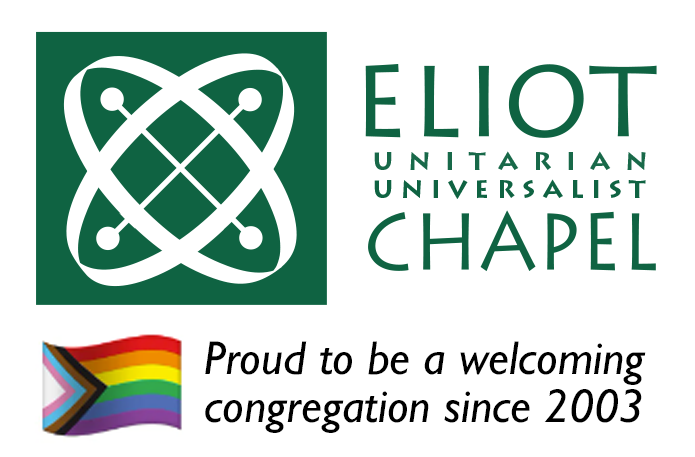Strategic Planning Committee Unveiling of New Three-Year Rolling Plan
Wednesday, August 14 at 7:00 pm on Zoom
The Strategic Planning Committee (a subcommittee of the Board of Trustees) invites all Eliot members to attend a Zoom meeting to see an overview and discuss our newly adopted three-year rolling plan unveiling. Mark your calendar for Wednesday, August 14 at 7:00 pm, and join us for a short presentation and Q & A session. We welcome your comments and feedback! If you are unable to attend, please direct any feedback to chair@eliotchapel.org.
Background and Overview
The Eliot Board of Trustees has important fiduciary, congregational assessment, and goal setting responsibilities. The lead minister has the responsibility to operationalize the board’s vision and discernment. One way that the Board and lead minister can collaborate transparently on these responsibilities is through the development of a strategic plan.
Rev. David Pyle from the UUA worked with the Eliot Board in recent years to teach the Board one style of strategic planning that we have recently adopted and now share with the congregation. This style is a rolling three-year plan. It has several features that serve church life well.
Rev. Pyle emphasized starting small. He recommended three to four goals in certain areas of church life that seem important. This does not mean that other areas of church life aren’t important. Rather, making the difficult choice to emphasize a few areas early allows Eliot to get started on a formal process without becoming overwhelmed and frustrated with upkeep and oversight.
To help Eliot get started, the Board assembled a small committee composed of the Board’s Chair-elect (Carole Glauser), another Trustee (Kalen Ponche), Rev. Krista, and a Nominating Committee member (Steve Mennerick). This team was armed with the Board’s discernment of stated goals (Ends; listed at the top of the strategic planning draft), Rev. Doug Wadkins’ interim ministry data obtained through congregational interviews, and the Search Committee’s data obtained through surveys, focus groups, and other sources. From these inputs, the strategic planning committee decided on the goals that you see in the strategic planning draft.
Each section of the rolling three-year plan starts with an overarching area as a heading. There are five of these in our draft. The big goal is then broken into constituent pieces. Year one goals are listed on the left, along with responsible parties (staff, board, congregants, etc.) and the tasks to be completed. Year two goals are listed in the middle column. Year three tasks are listed on the right. Importantly, the plan is meant to balance accountability and flexibility. Year one goals should be quite detailed and achievable, representing ~90% of what needs to be done in that year. Year two goals are meant to be less complete, perhaps 70%-80% of what needs to be completed. Year three is meant to be more imprecise, perhaps ~50% complete. This graded completeness and precision allows any uncompleted work from one year to be shifted to the next at the end of the year. As year one completes, year two operational goals are more fully outlined, and year two becomes year one. As the planning team gets more comfortable with the process (and celebrates some early success!), additional emphasis areas are added to the plan.
The strategic plan is thus meant to be a living document that is collaboratively developed. The implementation is continuously evolving. The Board remains primarily responsible for setting the high-level goals, while the lead minister remains primarily responsible for operationalization through delegation to staff and congregants. Since spring when the draft started development, it has already proven useful for identifying priorities. Several of the goals have already been completed, despite the plan being in draft form!
The Strategic Planning Committee hopes that the four areas we chose to get started will resonate with you, remembering that they do not comprehensively represent congregational activity. Certainly a major theme from congregational surveys and focus groups is ‘community.’ This theme runs throughout the emphasis areas, and we hope the process of strategic planning itself, which we now share with the congregation, fosters a deeper sense of community at Eliot.
See Sunday's "Eliot on Zoom" email or check your inbox for a message with information to link to the Zoom meeting.

